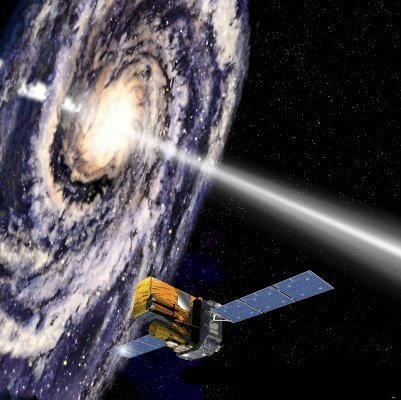
Latest news
2012 - 09 - 20: Delivery of SPIDAI tool
SPIDAI (SPI Data Analysis Interface) is a tool developed to help the scientific community to analyse the SPI data. Through an interactive interface, it provides default configuration files and guides the user toward reliable results. The manual user describes the procedure and explains how to choose the different parameters at each step. Any analysis ends by displaying a chi-squared array which allows to check the robustness of the results.
2011 - 01 - 28: PHD-Thesis on the high energy emission of accreting compact objects!
IRAP (ex CESR) graduate student Robert Droulans performed temporal and spectral studies of the high energy emission of compact objects using SPI data. The student reports on the detection and physical interpretation of a high energy component (beyond the thermal Compton emission) in the spectrum of two accreting black holes and one neutron star. Here you can find the abstract and the complete manuscript (in french) of this work.
2010 - 11 - 18: Extension of the INTEGRAL mission!
ESA’s scientific advisory bodies have approved the request to extend the science operations of the INTEGRAL mission until 31 December 2014. Following the standard process, the advisory bodies will be requested in 2012 to reconfirm the extension.
The Science Case submitted by the INTEGRAL Users Group can be found here.
2010 - 10 - 01: New results on the positron annihilation spectrum!
Churazov et al. analyze SPI/INTEGRAL data on the 511-keV line from the Galactic Centre, accumulated over 6 yr of observations. It is found that most of the positrons annihilate only after the gas has cooled down to approximately 105 K, giving rise to annihilation emission characteristic of a warm, ionized ISM. The complete publication can be found here.
2010 - 07 - 26: Update on the morphology of the Galactic annihilation emission!
Bouchet et al. re-addressed the morphology of the 511 keV positron annihilation emission, using a background model based on mesures of the detector pattern along with a variable normalization time scale of a few hours. They found that the emission from the Galactic bulge can be modeled with two axisymmetric Gaussians, with a possible shift of the bulge center towards negative longitudes; within the limits of the statistical errors, the Galactic disk emission is also found to be symmetric. The link to the full publication is featured here.
2010 - 07 - 18: Radioactive Al(26) signal from the Sco-Cen association!
Diehl et al. report a search for Al(26) gamma-ray emission from the nearby Scorpius-Centaurus association and its subgroups with the Compton Observatory and INTEGRAL gamma-ray instruments. The direct detection of the Al gamma-ray line confirms the recent ejection of massive-star nucleosynthesis products from the Sco-Cen region. The ADS link to the full publication can be found here.






